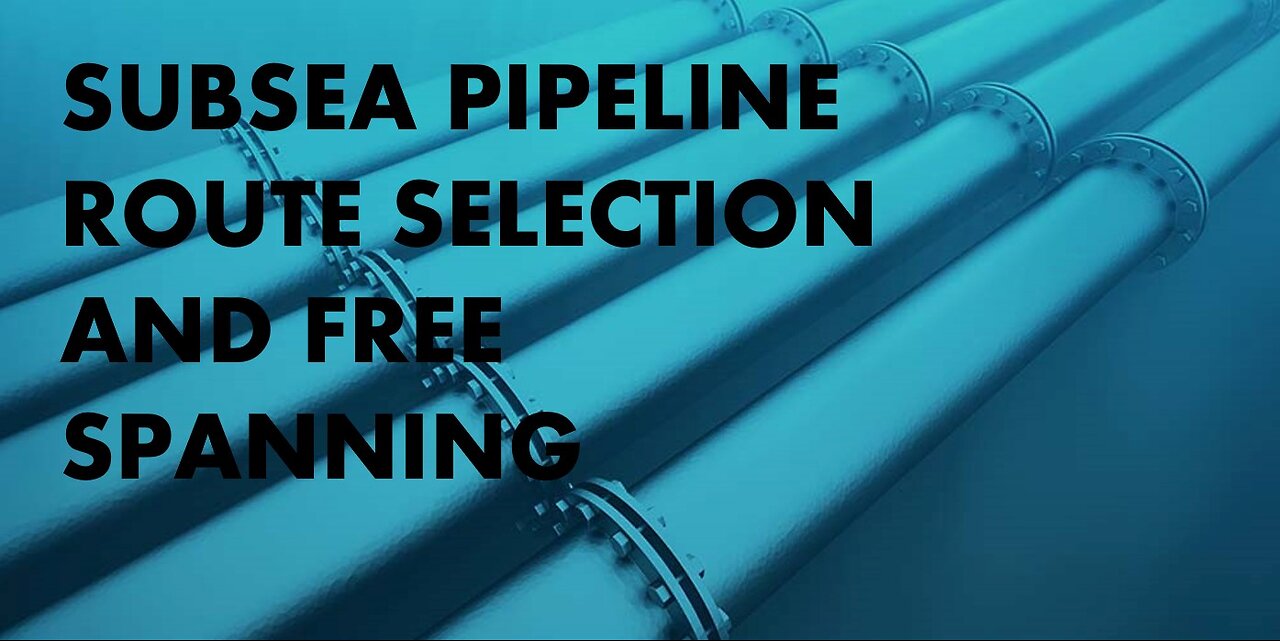Premium Only Content

Subsea Pipeline Route Selection and Free Spanning
Pipeline route selection is the process that evaluates and selects a preferred route from competing alternative routes. The process is largely governed by such controls as engineering requirements and costs, environmental (biophysical) concerns and socioeconomic issues. Pipeline route characterization is the process that determines the nature and behaviour of factors that influence and are influenced by the pipeline route. In the overall route selection process, route characterization addresses the combined effects of engineering and environmental factors such as to minimizing the free spanning of pipeline. This course deals extensively with characterization of terrain conditions and geohazards that affect pipeline route selection and pipeline construction.
Free spans on subsea pipelines are mainly caused by seabed irregularities, scouring, and other factors such as movement of the pipeline during operation or the installation of artificial supports. Free spanning of subsea pipelines is a concern during both the installation and operational phase of the pipeline life and needs to be monitored to ensure the integrity of the pipeline.
Vortex Induced Vibration (VIV) is known to be one of the major sources of dynamic loads on free spanning pipelines. Due to the flow of wave and current around the free spanning pipeline, vortex shedding is generated; when the vortex shedding coincides with the natural frequency of the span, it causes the pipeline to vibrate, either in-line with the flow (in-line VIV) or in perpendicular motion to the flow (cross-flow VIV).
For full videos you can visit this link :
https://drive.google.com/file/d/1WAtpi9TEuzvTb5MtGuh9CUtPsE0Em7Uz/view?usp=sharing
and you will be directed to a google drive link where you can download all files of this course
https://drive.google.com/file/d/1jN858DrIoa4a4XjOOQPd_HluIzZr62sZ/view?usp=drive_link
-
 3:31:29
3:31:29
SavageJayGatsby
6 hours ago🔥 Spicy Saturday – Let's Play: Prison Life 2🔥
38K2 -
 4:34:18
4:34:18
cosmicvandenim
12 hours agoCOSMIC VAN DENIM | WARZONE HORROR
9.1K1 -
 29:09
29:09
Stephen Gardner
10 hours ago🚨Trump DECLARES WAR on TERRORIST LEFT!
27.8K42 -
 4:16:00
4:16:00
NellieBean
5 hours ago🔴 Lost Girl looks for Lost Village
7.69K -
 30:07
30:07
JohnXSantos
1 day agoWhy Clothing Brands NEVER Fail- Master Class
5.23K -
 LIVE
LIVE
Spartan
3 hours agoOMiT Spartan | God of War Ragnarok, College Halo match @ 9:30 EST, then ranked or more GoW:R
19 watching -

John_Goetz
3 hours agoJohn Gets Gaming - Ghost of Yotei
1.72K -
![[LIVE] Battlefield 6 | Full Focus, Cinematic Moments, Zero Fear 😎](https://1a-1791.com/video/fwe2/cb/s8/1/q/z/W/r/qzWrz.Vkob-small-LIVE-Battlefield-6-Full-Foc.jpg) 2:48:33
2:48:33
AgnoLand
4 hours ago[LIVE] Battlefield 6 | Full Focus, Cinematic Moments, Zero Fear 😎
1.97K -
 24:34
24:34
HaileyJulia
8 days agoThis Christian Morning Routine Changed Everything for Me
5.45K3 -
 35:04
35:04
Athlete & Artist Show
11 hours agoOlympic Hockey Is In Trouble!
1.97K